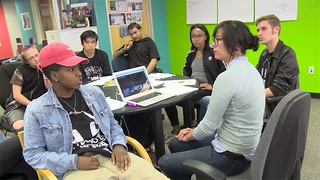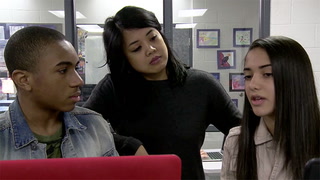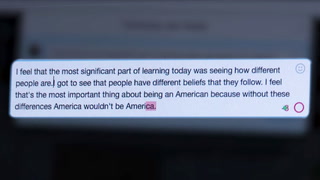Spark Your Persuasive Writing: 3 Simple Prompts Transcript
Speaker 1: So in order to draw out ideas for what you might want to write about or what you have to write about, one technique I really like is to use three very simple, guided questions.
Speaker 1: The three questions I use are, I know, I care about, and I wish people understood that. And then you have young people fill out the rest of that sentence.
Speaker 1: I know. I know what you're writing. I know the sky is blue. Always try to emphasize, this is not about facts that everybody agrees on. This is about your personal experience.
Speaker 1: I care about, that's what I care about. May not be what Denise cares about, or what [inaudible 00:00:42] cares about, and that's fine.
Speaker 1: And the last one, I wish people understood, something that you understand based on where you're coming from that you feel like maybe not everybody gets.
Speaker 1: So here's how it's going to work. Write those phrases on your piece of paper, and then I want you to write three things under each of those categories. And if you use a complete sentence, get into as much detail as you want or feel comfortable with, and then we'll come back and share.
Speaker 1: Let's ask some follow-up questions. There's some really interesting things written up here. So let's get to know a little bit about the story behind some of the stuff that y'all wrote.
Speaker 1: I have one, I'm going to be selfish and ask this. I'm curious about the one like, I can't be perfect, I can't fix all problems. That's no reason not to try. Whose is that?
Molly: Mine.
Speaker 1: Molly. So can you tell us more about that?
Molly: I guess I've just kind of always wanted to be the person that fixes everything, and I've always wanted to be the best and the fact that I couldn't be has often times made me want to quit.
Speaker 1: Have you ever felt like that before? Like you feel like you shouldn't try because you can't be perfect or that the problem's so big, you don't know how to wrap your head around it?
Speaker 3: Mm-hmm (affirmative).
Speaker 1: Yeah.
Speaker 1: There's something really universal about that. And I feel like that's a sign of something that might want to expand, and other people are going to be interested in.
Speaker 1: The technique of using three very simple questions makes us feel like the process is very simple, too. I can just dig deep into what I've experienced, and come up with something that could be the kernel of a really deep, persuasive story.
Speaker 1: That's true whether you're doing commentary writing, persuasive essay, whether you're trying to do create writing prompts. All of those techniques start with something very small and simple, and through facilitation, show that they can become these big, important, persuasive essays.

















14 Comments
Michael Burnett Jun 12, 2020 3:06pm
The three prompts are "I know," "I care about," and "I wish peple understood that."
The statements on the posters are fairly basic, so she uses discussion to get more thought from the students. She asks pointed questions to get students to elaborate more about their comments.
This would be useful in starting discussion about texts/literature covered in class, as well as some of the more technical aspects covered in the course.
Cade Patterson Aug 23, 2019 9:29pm
The teacher does a fantastic job on getting the students involved in the writing by relating it to themselves or something that they want to be or do. This makes the students care more about their writing and put more effort into the paper. As I become a new teacher it is important for me to use any strategy I can to make sure my students are involved and producing the best work they can.
Melissa Gomez Oct 30, 2018 11:12pm
I really liked that the teacher had the students make personal connections to their writing. Overall, it makes the work more meaningful to the students, keeping them engaged and motivated to learn more. These are definitely strategies I would like to incorporate in my future classroom.
corina pedraza Oct 30, 2018 11:02pm
I really liked the fact that students would really personalize what they wrote. The writing wasn't just regurgitating information from a book, it was them digging deep into themselves. I think that this is something that is often looked for in school, teachers look to see if students are able to relate things back to themselves and their experiences. I also liked the fact that the teacher allowed them to talk about what they wrote in what seemed to be a very comfortable group environment.
Edgar Hernandez Oct 30, 2018 10:26pm
I liked what the teacher incorporates because it gives students a way to reflect on their experineces to write. It is giving the students more of a choice than just writing from a prompt.